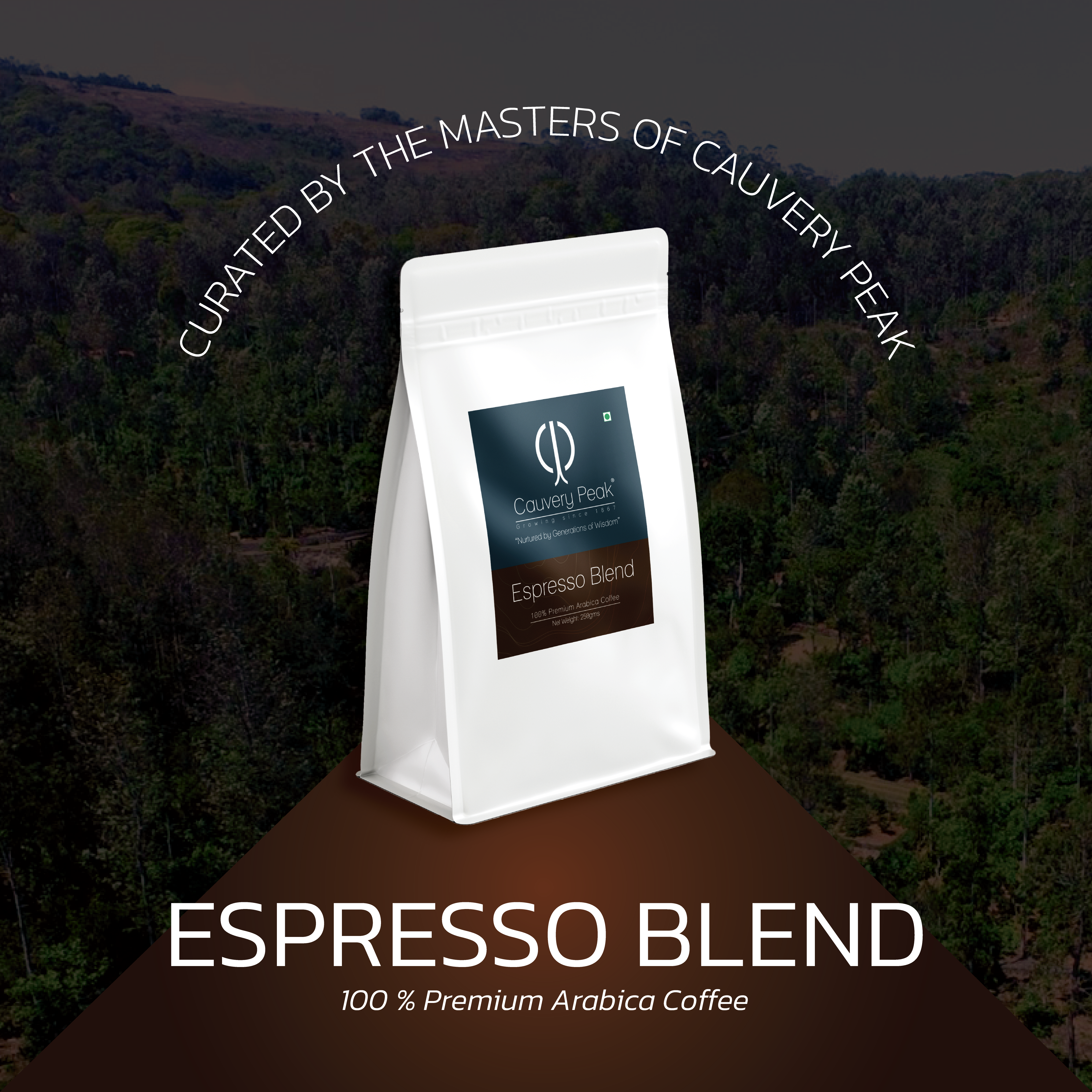Specialty coffee is the highest grade of single origin and single estate coffee. It is defined by elevation, acidity and after taste followed by aroma and body.
- Elevation – height above mean sea level
- Acidity – flavour
- After taste is primarily determined by the inter crops and soil.
- Aroma – smell
- Body – thickness of the brewed decoction
High elevation produces more acidity, which produces good flavour. Low elevation produces more body, which is good decoction.
Cauvery Peak due to its ideal elevation at 4600ft has good flavour and body making it a "Well Balanced Cup"!
WELCOME TO THE SHEVAROYS
William H. Ukers identified the Shevaroys, as a source of the best coffee from India in his book “All About Coffee” published in 1922.
The Shevaroys is primarily a coffee growing region in South India, producing some of the “finest coffees in the world”
G2C
GROWER TO CONNOISSEUR
India's first bespoke coffee. Nurtured from nursery seed to roasted bean entirely on the estate.
LEGACY
1867
Cauvery Peak estate assigned to Mr. E. Joachim by the erstwhile British India.
1925
Rao Bahadur Sentikumar Nadar coffee, spices merchant from Virudhunagar purchases first estate in Devikolam, Kerala.
1936
MSP Nadar travels to Europe to export raw coffee under the name Hill Tiller & Co.
1937
MSP Nadar purchases
Glenfell Estate.
Glenfell Estate.
1942
MSP Nadar purchases
Thangavilla Bungalow
Thangavilla Bungalow
1957
Mrs. Thangama Nadar and Mr. MSP Rajes purchase Cauvery Peak Estate and forms MSP Nadar sons to administer the estates.
1965
MSP. Rajes visits Costa Rica to procure HRC seeds.
1975
MSP Plantations formed by Mr.MSP Rajes & Mr. Vijayan Rajes in place of MSP Nadar sons.
1987
Shevaroys estate purchased by Mr.Vijayan Rajes.
2016
Mr.Vishnu Rajes joins the management team of MSP Plantations.
2017
Cauvery Peak is launched by Mr. Vijayan Rajes and Mr. Vishnu Rajes.














